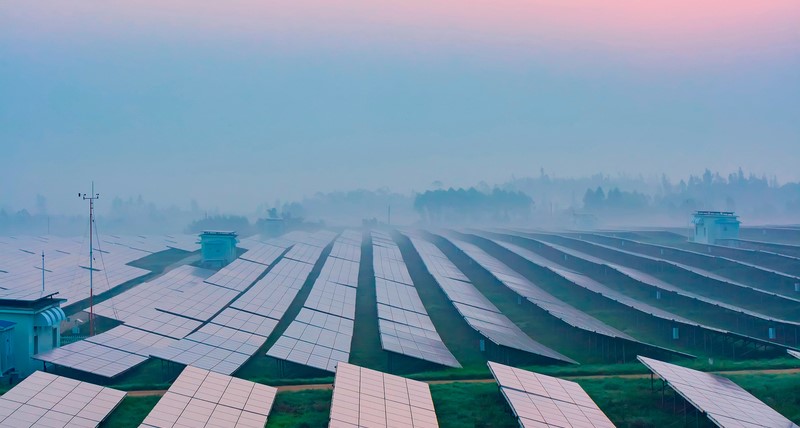Within the last few weeks, two big tenders were won by Lufft – one from the “KNMI” (Dutch Royal Weather Service), and the other one from the biggest German Weather Service “DWD” (“Deutscher Wetterdienst”). Both of them were looking for a cloud height sensor capable of measurements up to 12 kilometers into the sky. The Lufft CHM 15k can detect different cloud layers which are even up to 15 kilometers high. More ceilometer facts in the following blog post…

The Ceilometer Tenders
Within the last few weeks, two big tenders were won by Lufft – one from the “KNMI” (Dutch Royal Weather Service), and the other one from the biggest German Weather Service “DWD” (“Deutscher Wetterdienst”). Both of them were looking for a cloud height sensor capable of measurements up to 12 kilometers into the sky. The Lufft CHM 15k can detect different cloud layers which are even up to 15 kilometers high. Through the tenders both weather services found the right sensors to renew or extend their existing measurement network. Thereby KNMI replaces 39 devices over a time period of two years. The DWD will install more than 100 ceilometers over the upcoming years.
The weather services use the ceilometers for different fields of application and supply corresponding customer groups with the collected measurement data. These include civil and military airport managers, flight weather consultants and users of environmental measurement technology as well as climate researchers. Further areas are research about the atmospheric particle distribution and the determination of mixing layer depths. Furthermore they are useful for the improvement of weather forecast models, which are fed with additional air pollution data. Through this, e.g. heavy rain can be better predicted. KNMI has similar customer groups but are more focused on the offshore use, where cloud formations due to increasing air traffic is an important information for oil, wind and assembly platforms.
Thus big tender decisions often take more than one year to be settled and are associated with a lot of paperwork. Therefore Lufft not only offers the answers to all customer requirements, but also broad product training either in form of webinars or as hands on training at the different Lufft sites.
Optical Sensors by Lufft
The optical sensors (snow depth sensors and ceilometers) are developed at Lufft’s Berlin site with Holger Wille as head of this business area. Therefore, the current training for the cloud height sensor take place there. The site is located in the so-called Berlin Adlershof, an industrial park where a lot of high-tech companies are bundled and benefit from each other.
But what – besides the 15 km cloud height detection – makes the CHM 15k such a great sensor?
Due to its double case structure combined with a window blower, and an automatic heating system, the CHM 15k is not sensitive to condensation, precipitation, freezing or overheating. It comes with a high optical sensitivity for exact results, a solid and long life state laser source, small bandwidth filters and a highly sensitive photo receiver. Through this the device measures multiple cloud layers and is however eye-safe. The modular design makes it low-maintenance and service-friendly. Delivered with easy-to-use software for the raw data storage and creation of various data telegrams, also the device itself can be set. The measured backscatter data is issued in NetCDF format.
Ceilometer standardization processes
Meanwhile three LIDAR standards have been published by German and international normalization organizations in cooperation of the LIDAR technique inventors, LIDAR instrument constructors, and LIDAR product users. Together they are devoted to find and determine reasonable regulations. Two German standards were already accepted globally by the International Organization for Standardization (ISO). Presently a backscatter LIDAR standard is being developed in Germany.
The increasing diverse range of application of ceilometers as “small” LIDAR systems makes it necessary to standardize the „particle measurement technology“. A good example for the need of LIDAR ceilometers is the eruption of the Eyjafjallajoekull volcano in 2010, when only this kind of technology could provide information about the vertical extent of the plume and its ash concentrations. Its ash spread from Iceland over whole Europe and influenced the air quality. At that time, the already available CHM 15k was the only one which was able to deliver information about the vertical structure and the spread of the ash cloud. The advantage of this instrument became obvious particularly in the direct measurement network comparison. In those days, the real time observation wasn’t possible. Therefore the ash cloud movements were simulated afterwards and detailed with high resolution.

In such cases the standardization of air pollution data- and unavoidable connected cloud height measurements makes particularly sense, because the measurement equipment has to deliver worldwide comparable values in order to set rules for e.g. the air traffic. Significant tasks related to air pollution control are carried out by the standard committee NA134 of the commission of air pollution control (KRDL) in VDI (Association of German Engineers) and DIN (German Institute for Standardization) versions. Also the World Meteorological Organization (WMO) represented by its Technical Commission on Instruments and Methods of Observation (CIMO) participates in the decision finding.
The classification of diverse LIDAR systems into service classes on the market can be performed better via the introduction of standards for particle and air pollution data measurements in future. Lufft aims to fulfil as high requirements in order to detect different particle layers, cloud bases and further derivation of measurement profiles as possible and this at a great price performance ratio.
Further information on the following links:
– Ceilomap DWD
– Interpretation of the measurement value from DWD
– More to read about the DWD tender
– More to read about the KNMI tender



